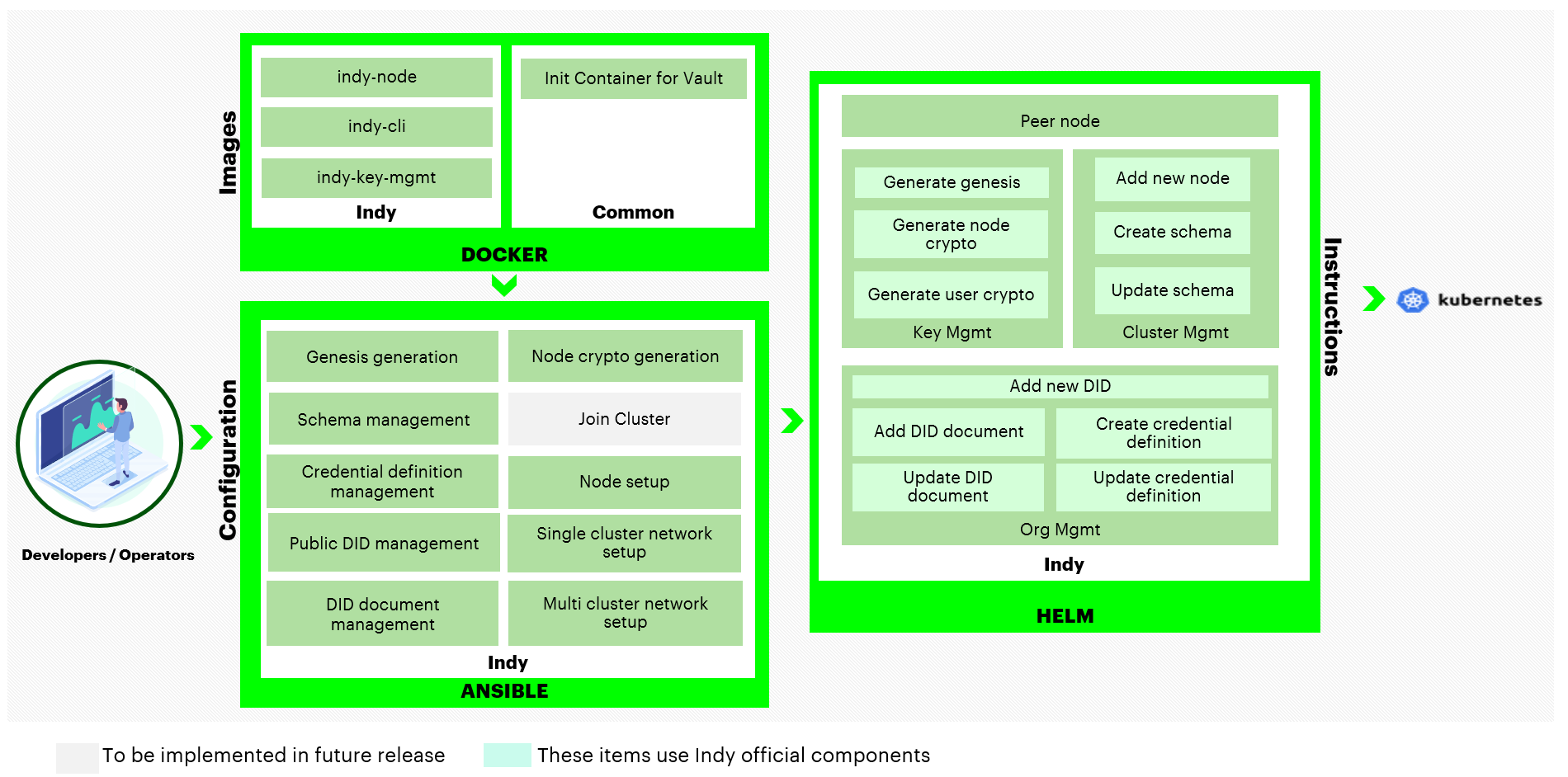Hyperledger Indy Architecture Reference¶
Kubernetes¶
Peer Nodes¶
The following diagram shows how Hyperledger Indy peer nodes will be deployed on your Kubernetes instance.
 Figure: Hyperledger Indy Kubernetes Deployment - Peers
Figure: Hyperledger Indy Kubernetes Deployment - Peers
Notes:
- Pods are shown in blue in the diagram.
- Each StatefulSet will have
steward-node-initfor initialization (read crypto from Vault) andsteward-nodecontainers running. Since they are in the same pod, Kubernetes always schedules them on the same VM and they can communicate to each other through localhost. This guarantees minimal latency between them. - The storage uses a Kubernetes Persistent Volume.
Components¶
 Figure: Hyperledger Indy Components
Figure: Hyperledger Indy Components
Docker Images¶
Hyperledger Bevel creates/provides own Docker images, which are based on Ubuntu and consist with official Hyperledger Indy libraries (indy-plenum and indy-node).
- indy-cli - Docker image contains Indy CLI, which is used to issue transactions again an Indy pool.
- indy-key-mgmt - Docker image for indy key management, which generates identity crypto and stores it into Vault or displays it onto the terminal in json format.
- indy-node - Docker image of an Indy node (runs using a Steward identity).